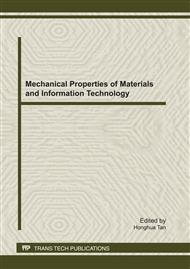p.439
p.444
p.451
p.456
p.461
p.467
p.473
p.480
p.487
Kinetic Study on Phosphorus Adsorption, Phosphorus Desorption, Nitrification, and Denitrification by Using Mineralized Refuse
Abstract:
The mineralized refuse has a well particle size distribution and is similar asirregularly polyhedron with the high contents of Fe, Al, and Ca, which might be thephosphorus pool. The absorption and desorption of phosphorus, nitrification, and denitrification in the mineralized refuse and clay has been investigated by using batch incubation, respectively. The variation of phosphorous adsorption in the mineralized refuse and clay is fitted the Langmuir isotherm equation. The maximum phosphorus adsorption capacity in the mineralized refuse calculated based on the Langmuir isotherm equation is 2914 mg kg-1. Both the maximum adsorption capacity and adsorption rate of phosphorus in the mineralized refuse are over 2.0-fold more than that of the clay. The desorption rate of phosphorus in the mineralized refuse is only about 30%. NH4+-N contents in the mineralized refuse samples fell from 129 mg N kg-1 to 83.0 mg N kg-1 within the first 24 h during the nitrification process. Accordingly, the NO3--N content in the mineralized increased from 137 mg N kg-1 to 170 mg N kg-1. While the decrease of NH4+-N contents and the increase of NO3--N contents in the clay was only 1/2 and 1/6 as large as in the mineralized refuse, respectively. During the denitrification process, the K-value of the fitted zero-order kinetics for NO3--N denitrification in the mineralized refuse was 6.5-fold higher than in the clay.
Info:
Periodical:
Pages:
461-466
Citation:
Online since:
September 2011
Authors:
Price:
Сopyright:
© 2012 Trans Tech Publications Ltd. All Rights Reserved
Share:
Citation:


